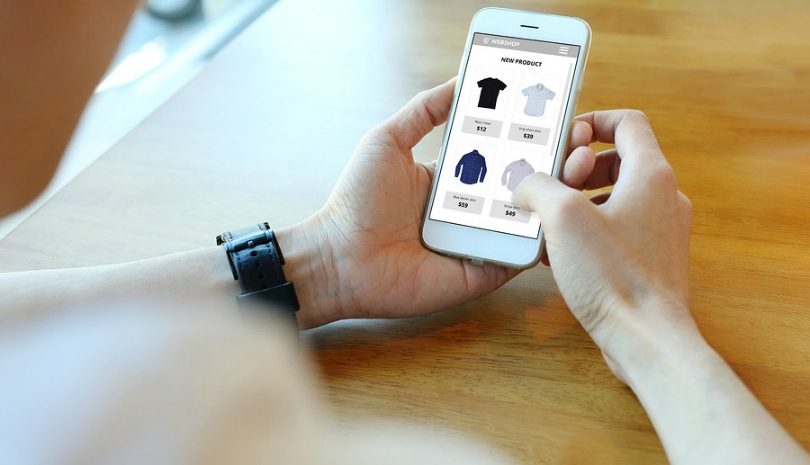Retailers missing out on growing app usage

Australian consumers increasingly prefer to shop online using mobile apps rather than mobile-friendly websites, but many retailers are not keeping up with demand, delivering either a negative app experience, or none at all.
“I think the biggest thing that should be eye-raising is the amount of app usage happening by the average Australian consumer on a browsing and buying level, and where we are on a commercial side and marketing side of being able to cater to that,” Criteo’s commercial director of ANZ, Pressy Sankaran, told Internet Retailing.
“The proportion of Australians who use apps for consumer purposes versus retailers that have apps is very, very low,” he said, citing a recent survey Criteo commissioned of 3,000consumers across the APAC region.
The findings, which have been published today in Criteo’s Retail and Shopping App Usage, revealed why Australians use shopping apps, what prevents them from using an app again and what items they are most likely to purchase.
Nearly half of Australian respondents to the survey, 46 per cent, said they use retail and shopping apps primarily for convenience. And nearly two-thirds, 61 per cent, said they find it more enjoyable to shop using an app than buying via a mobile website.
Criteo found that the vast majority of Australian respondents, 85 per cent, typically make a purchase via a retail or shopping app at least once a month, with 67 per cent completing their entire shopping journey – from discovery to purchase – in an app.
Interaction with mobile advertisements is also high, with over 44 per cent of Australian respondents clicking on a mobile ad within an app and purchasing an item within three months.
Sankaran called this statistic “pretty bonkers”, noting that Australia had the highest rate in APAC, beating out countries like Indonesia and Korea.
Mobile commerce is at a turning point in Australia, he said, with over half of all online sales expected to occur on mobile this year.
Electronics most popular on mobile
Criteo found that Aussie mobile shoppers are most likely to buy consumer electronics (51 per cent), fashion and luxury (46 per cent) and homewares (38 per cent) though an app. This makes sense, given the two most used apps are marketplaces: Ebay and Amazon.
The biggest reason consumers delete or stop using an app is that it’s too complicated or not easy enough to use.
“The data suggests that many retailers rush apps to market to tick a box, but fail to develop a platform that meets shoppers’ needs in the process, ultimately creating a negative experience. Time to test must be invested,” Sankaran said.
This is especially important, as apps provide a golden opportunity for retailers to reengage their customer base, according to Sankaran.
“If you can increase your customer’s experience – not just by telling a story, but by helping them browse easier, check out easier and improving shipping and logistics – you’re going to see repeat engagement at a very high rate,” he said.
“You can’t deny the fact that mobile apps have stickiness, especially with the conversion rates that players like Ebay see. A lot of imports, Amazon is a big one, but also Wish.com, are seeing high levels of re-engagement through their apps.
“When you talk about individual retailers, The Iconic have a fantastic app experience and a demographic that’s very prone to buy online.”
Future lies in collaboration
Looking more broadly at the best examples of mobile commerce, Sankaran said Australian retailers have a lot to learn from their peers in China, where the mobile experience is extremely customer-focused.
The fact that so many companies offer their products and services through the messaging platform WeChat simplifies the mobile shopping experience for customers, even if competitors end up sitting side-by-side.
“Uber is a good example of that in Australia,” Sankaran said. “If you’ve ever scrolled down when you’re on a trip, Uber will show you places you can order from on UberEATS when you get home. That’s a great example of cross-collaboration. Obviously they’re both the same company, but that’s the direction we’re moving in definitely.”
According to Sankaran, increased competition from overseas players will force Australian retailers to work more closely together in the near future.
“There are a lot of macro forces that will force the market – and Australia in particular – to reevaluate and look for new opportunities. One of those opportunities I think will be collaboration between retailers on a large level,” he said.
“By this I mean co-opting data to make sure you know who a user is, their full profile, to leverage yourself against those macro forces coming in. You have Amazon coming in and other imports from the UK, John Lewis, Decathlon, TK Maxx.
“What’s happening right now is Australia-based marketplaces are taking advantage of the fact that retailers need to collaborate and need to be part of something bigger. Over the next 12-18 months, that’s where I see the near future going.”
A version of this story first appeared in issue 2159 of Inside Retail Weekly. To subscribe, click here.
Comment Manually
You must be logged in to post a comment.

No comments